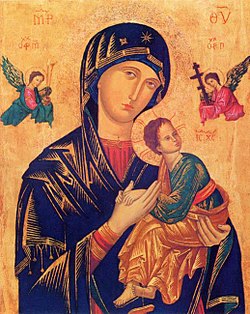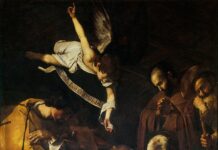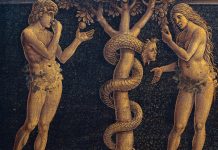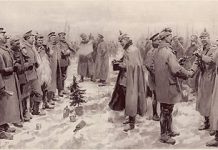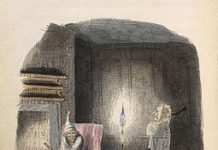Today is the traditional feast of Our Lady of Perpetual Help, even if it be muted this year due to the Sacred Heart – signified in one of the most famous ‘icons’ of the Virgin Mother, which, by tradition – legend, some might say – goes back to Saint Luke himself, who besides being a physician was also an artist, an iconographer who ‘wrote’ the true living image of Our Lady on the dinner table of the Holy Family.
The icon itself has a long and varied history, and, after a restoration in 1866 by a Polish painter, now resides in the church of Saint Alphonsus in Rome, under the care of the Redemptorists. A perpetual novena – if a nine-day prayer may be said to be perpetual – is recited on Wednesdays there, and in churches across the world, beseeching the Mother for whatever help we may need. And we need a lot of it.
Fittingly, this is also the memorial of Saint Cyril of Alexandria (+444), doctor of the Church, who, after a solid intellectual and spiritual formation, while still young was appointed Patriarch of the great see of Alexandria in October of 412. In the midst of much theological controversy and societal unrest, Cyril went on to govern the see for 32 years, during which time he produced a plethora of profound theological writings, commentaries on Scripture, sermons and letters, and was declared a Doctor of the Church by Pope Leo XIII in 1882.
He was a staunch defender of the truth against heresy. Soon after Cyril’s accession of Alexandria, the agitator Nestorius, originally from Antioch, had assumed the patriarchate of Constantinople, and his restless but literalistic mind brought forth the new-fangled teaching that the Virgin Mary was not really the ‘Mother of God’, Theotokos, but rather the ‘Mother of Christ’, Christotokos, for how, as he figured, could a human creature give birth to the eternal God, or the same God undergo a human birth? For Nestorius, Mary gave birth to the human person of Christ, but not the divine Person. In other words, by logical consequence, Christ was two persons.
When I ask students in class – to introduce them to the concept of ‘material heresy’ – if Christ was and is a human person, almost all enthusiastically respond, ‘of course’. But not so.
It was up to the great mind and soul of Cyril to defend Mary’s traditional title as Theotokos, in defending the hypostatic unity of the Incarnation, that Christ is one divine Person – hypostasis in Greek – the Second Person of the Blessed Trinity, and this one divine Person united His eternal divine nature with our human nature in that one hypostasis, so that all things done in and through that human nature were truly divine, actions of God Himself. Christ was and is not a human person, but a divine one, with two natures. And this union between God and Man permeated through all our human nature, so that we all in some sense are elevated, perfect, ennobled, just from the very Incarnation itself, or Himself.
As Gaudium et Spes puts it: For by His incarnation the Son of God has united Himself in some fashion with every man
Every heresy is an attempt to understand the Faith fully, to rationalize things, to make its mysterious and eternal truths fit within the small limited compact of our own brains. The thing is, God is bigger than our minds, and can do far greater things than we may imagine, including truly becoming Man or, more properly, assuming human nature. [1]
Nestorius’ doctrine would have bifurcated Christ into two persons, one human and the other divine, the unity between them lost in the vague fog of such terms as ‘moral unity’. In sum, Nestorianism, as it came to be called, would have destroyed the truth of the Incarnation, as Cyril clearly perceived.
Cyril’s teaching – the traditional doctrine of the Church – was vindicated at the Council of Ephesus in 431, which declared for all time Mary’s divine maternity of the Second Person of the Trinity in His human nature, and the icon of the Theotokos was paraded with great joy through the streets. People took theology quite seriously in those days, as they should now, for all things are ultimately theological, as the religious frenzy of the current ‘protests’ make clear.
But all hinges on that one central historical fact of the Incarnation, and the response to Christ’s own question to all us: “Who do you say that I am?”, the answer to which changes everything, forever.
[1] For those interested in a very valuable, readable and edifying take on this doctrine and its convoluted history, please do peruse Aaron Riches’ book, Ecce Homo.

